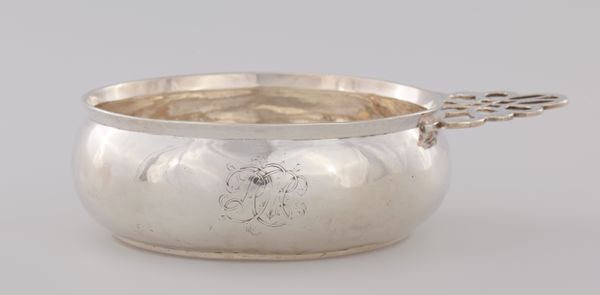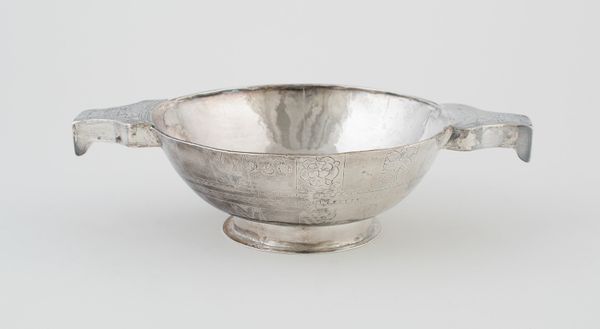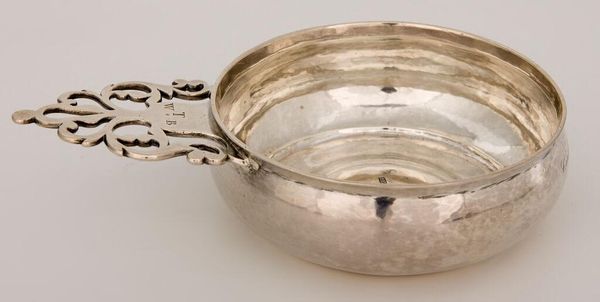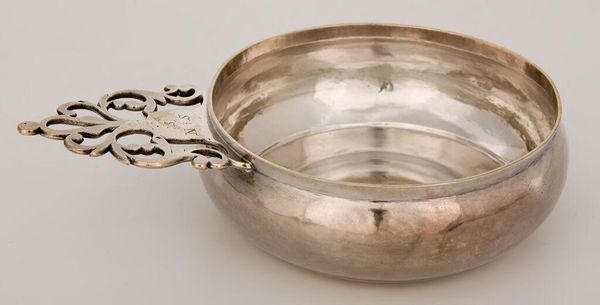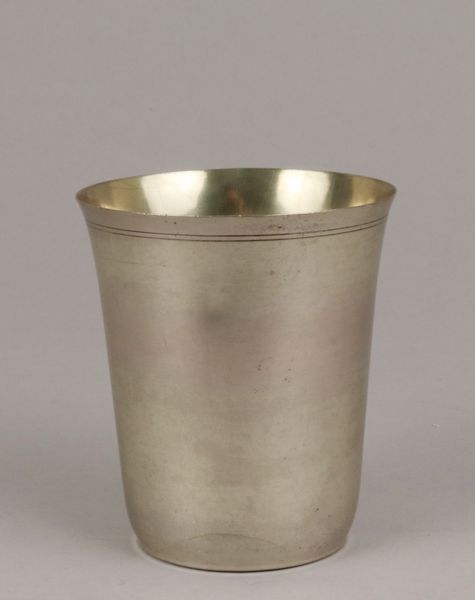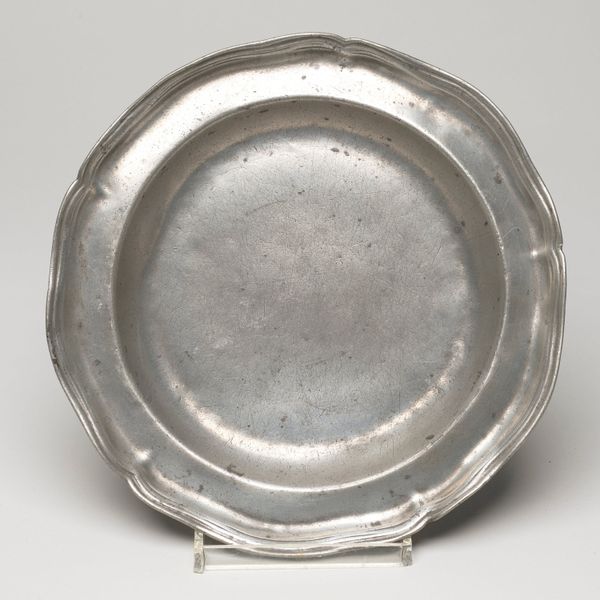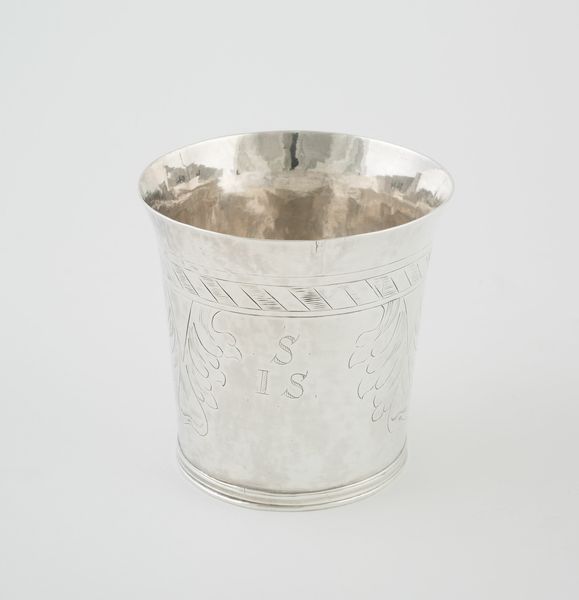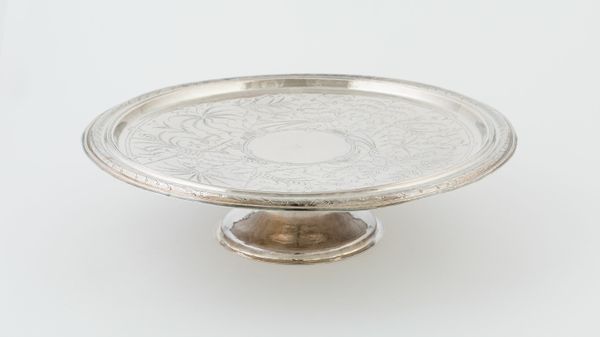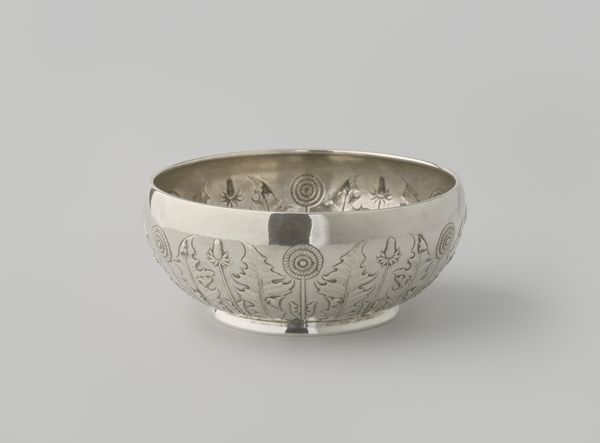
metal, ceramic, bronze
#
metal
#
ceramic
#
bronze
#
stoneware
#
ceramic
#
islamic-art
#
decorative-art
Dimensions: height 19.6 cm, diameter 46.8 cm, diameter 35.0 cm
Copyright: Rijks Museum: Open Domain
Curator: The piece we're looking at today is a basin, likely dating from sometime between 1322 and 1350. It's crafted from bronze, although it has an appearance very like gold, and it showcases intricate decorative work that marks it as a significant example of Islamic art. Editor: It's funny, isn't it? A bowl that looks like it’s been dipped in liquid sunshine. Very unassuming, and the engravings make you want to look closer... there is more than meets the eye here, obviously! Curator: Absolutely. Basins like this weren’t mere decorative objects, though their artistic merit is undeniable. They played crucial roles in Islamic culture, especially in rituals related to cleanliness and hygiene that hold deep religious significance. Editor: A ritual, how lovely! Does that mean this basin wasn't for washing radishes then? It almost looks too fancy to wash, let alone prepare food in. There’s an understated opulence, isn't there? A richness in the subtlety of form and detail. Curator: The material, the engravings – all point to it having been used in a courtly setting, possibly associated with ablutions before prayer or maybe for ceremonial hand-washing at official events. Think about the societal implications—a gleaming object emphasizing both physical and spiritual purity! Editor: So, a visual representation of internal cleanliness as well, quite literally, shining from within... a gold nugget from another age, really. Imagine being presented to it and how grand you might feel by it! What stories it could tell... all that glitters holds water. Curator: It is tempting to romanticize! It's important to acknowledge that pieces like this also represent complex social dynamics. Access to objects of beauty like this was heavily controlled, a clear visual signifier of status and power. Editor: Well said! Even just observing this picture right now… I feel its presence; such a statement! Art keeps reminding me that time travel isn't needed because looking back is a voyage in itself. Thank you, "anonymous" artist, for the ride. Curator: Indeed! Objects like these serve as silent witnesses, offering us glimpses into a past where artistry, faith, and social structure were inextricably intertwined.
Comments
rijksmuseum about 2 years ago
⋮
Art objects from the Islamic Mamluk dynasty found their way to the Christian West early on. This basin was made in Syria or Egypt for the Sicilian court. It bears the arms of Elizabeth of Carinthia, Queen of Sicily, alongside Arabic and Christian ornament. Such exotic vessels were used as baptismal fonts or for ritual hand washing.
Join the conversation
Join millions of artists and users on Artera today and experience the ultimate creative platform.
